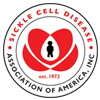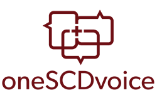DISCLAIMER
The information and materials accessed through or made available for use on any of our Sites, including, any information about diseases, conditions, treatments, or medicines, are for informational purposes only. The Content is not intended to be and is not a substitute for professional medical advice, diagnosis, or treatment, and your participation on our Sites does not create a healthcare professional-patient relationship. You should consult a doctor or other qualified health care professional regarding any questions you have about your health or before making any decisions related to your health or wellness. Call your doctor or 911 immediately if you think you may have a medical emergency.compose your message
message sent
email sent successfully
Trusted Resources: News & Events
Latest announcements and gatherings
Sickle-Cell Patients See Hope in CRISPR
Sickle-cell disease is one of the most common genetic disorders, affecting millions of people around the world. It’s caused by a mutation in a gene known as HBB, which makes hemoglobin, a protein that transports oxygen throughout the body. Blood cells with healthy hemoglobin are red and disc-shaped. Cells with abnormal hemoglobin are shaped like sickles used to cut wheat, the characteristic that gives the disease its name.
CRISPR Therapeutics is one of a handful of gene-editing startups pursuing new treatments for sickle-cell. The company’s approach involves isolating stem cells from samples of patients’ blood. Scientists would use CRISPR to activate a genetic switch that would raise the levels of a fetal form of hemoglobin in red blood cells, turning them healthy. This fetal hemoglobin effectively counteracts the effects of the sickle mutation. The modified cells would then be infused back into the patients.

 +myBinder
+myBinderRelated Content
-
education & researchHigh mortality among children with sickle cell anemia and overt stroke who discontinue blood transfusion after trans...BACKGROUND: Chronic blood transfusion is...
-
news & eventsExperimental Gene Therapy Reverses Sickle Cell Disease for YearsA study of an investigational gene thera...
-
news & eventsSCDAA News Advisory: SCDAA Statement on Exa-cel Gene TherapyOn October 31, 2023, the Food and Drug A...
-
education & researchEffects of Hydroxyurea Treatment for Patients With Hemoglobin SC DiseaseAlthough hemoglobin SC (HbSC) disease is...
-
videos & visualsWhat Should Teens Ask Their Doctors About Hydroxyureahttps://www.youtube.com/watch?v=VZn15uXQ...
-
news & eventsSickle cell patients in UK survey, especially those 16 to 20, voice problems with care and pain relief givenIn a survey, patients across the...
-
news & eventsNovel Sickle Cell Drug Causes Radical Results in End of Life PatientsThis week the FDA approved a novel treat...
send a message
To improve your experience on this site, we use cookies. This includes cookies essential for the basic functioning of our website, cookies for analytics purposes, and cookies enabling us to personalize site content. By clicking on 'Accept' or any content on this site, you agree that cookies can be placed. You may adjust your browser's cookie settings to suit your preferences. More Information
The cookie settings on this website are set to "allow cookies" to give you the best browsing experience possible. If you continue to use this website without changing your cookie settings or you click "Accept" below then you are consenting to this.
Support for this site is provided by

This platform is made possible through a partnership with the Sickle Cell Disease Association of America, Inc. (SCDAA) and its member organizations. SCDAA's mission is to advocate for people affected by sickle cell conditions and empower community-based organizations to maximize quality of life and raise public consciousness while advancing the search for a universal cure.




